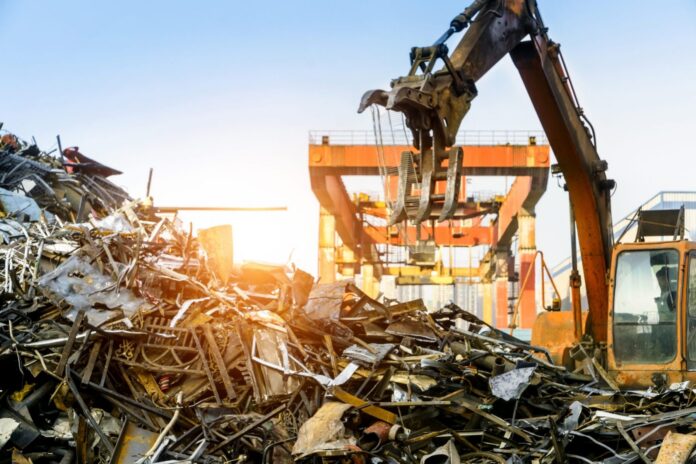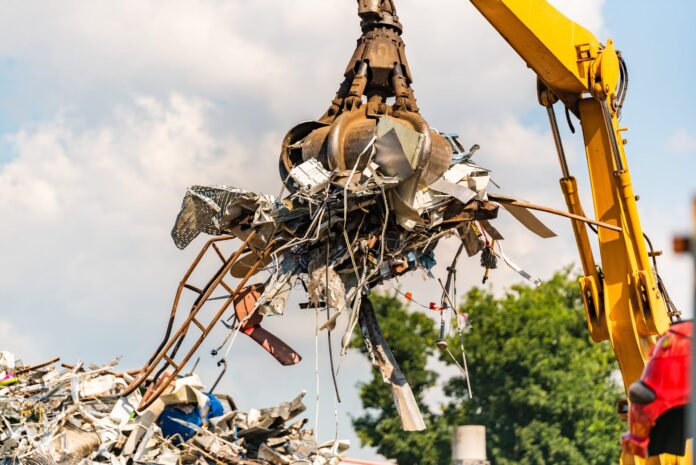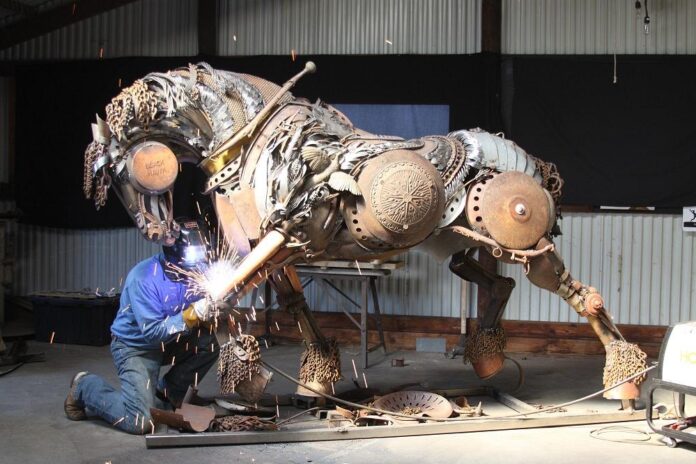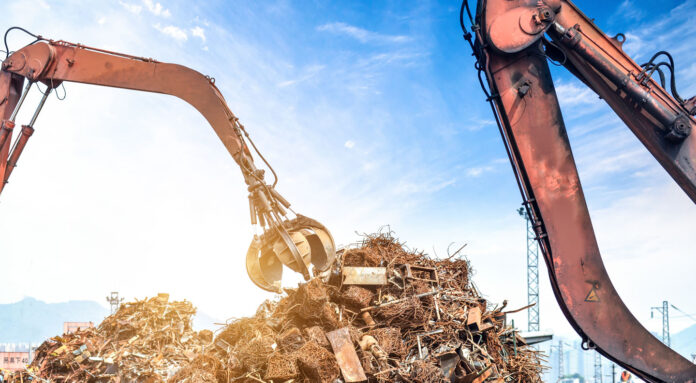
In a world that increasingly values sustainability and resource efficiency, the transformative impact of scrap metal recycling cannot be overlooked. From salvaging discarded automobiles to repurposing industrial machinery, the recycling industry plays a pivotal role in reducing waste, conserving natural resources, and mitigating environmental impact.
In this article, we will explore the process of scrap recycling and delve into the significant positive outcomes it generates. Join us as we uncover the journey of scrap metal from being discarded to being reimagined and how it contributes to a more sustainable future.
Understanding Scrap Recycling
Scrap recycling is the process of collecting, sorting, processing, and reusing materials that would otherwise end up in landfills or incinerators. It encompasses a wide range of metals, including steel, aluminum, copper, brass, and more. The recycling process involves several stages, including collection from various sources, such as construction sites and manufacturing facilities, followed by sorting, processing, and ultimately transforming the scrap into usable raw materials for new products.
Economic Benefits

One of the transformative impacts of scrap recycling lies in its economic benefits. Recycling has significant financial advantages for both businesses and individuals. The recycling industry creates jobs in collection, sorting, and processing facilities, contributing to local economies.
Moreover, recycling reduces the need for costly primary extraction and mining operations, which require extensive resources and energy. By reusing and repurposing existing metal resources, the recycling industry helps conserve valuable resources and reduces the economic burden of raw material acquisition.
Environmental Benefits
Scrap recycling has profound environmental benefits that contribute to a more sustainable future. By diverting metal waste from landfills, it reduces the strain on these already overflowing waste disposal sites.
Additionally, recycling scrap conserves energy and natural resources. Compared to producing metal from virgin ore, recycling scrap metal requires significantly less energy and fewer resources, resulting in lower greenhouse gas emissions and reduced water usage. It also helps minimize environmental degradation associated with mining activities, such as deforestation and soil erosion.
From Discarded to Reimagined

The journey of scrap from being discarded to being reimagined involves a systematic recycling process. It begins with the collection of various items, these collected materials are then sorted according to metal type and quality. Next, the sorted scrap undergoes processing, which may include shredding, shearing, or melting, depending on the desired end product.
Finally, the processed metal is transformed into reusable raw materials, which can be used in manufacturing new products, ranging from automobiles and construction materials to packaging and consumer goods.
The world of scrap recycling offers endless possibilities for repurposing and reimagining discarded metal items. Here are some examples of the amazing things that can be created from scrap metal:
Automobiles
A significant portion of scrap comes from old vehicles. Through the recycling process, the metal from scrapped cars is transformed into raw materials used in the manufacturing of new automobiles. This helps reduce the demand for new extraction and conserves resources.
Construction Materials
Scrap, such as steel and aluminum, can be repurposed to create construction materials. Steel beams, reinforcement bars, roofing materials, and siding can all be made from recycled scrap metal. Using recycled metal in construction reduces the environmental impact associated with producing new materials.
Packaging Materials
Metal containers, cans, and packaging materials can be recycled and transformed into new metal products. By recycling scrap packaging, we reduce waste and conserve resources, while still meeting the demands of packaging industries.
Consumer Goods
Various consumer goods, including appliances, furniture, and household items, can be manufactured using recycled scrap. From kitchen utensils to home decor items, repurposed metal adds a unique touch to everyday products.
Industrial Equipment
The recycling process allows for the repurposing of industrial equipment and machinery made from scrap. Components such as gears, pipes, valves, and fittings can be recycled and used in the manufacturing of new industrial equipment, reducing the need for virgin materials.
Art and Sculptures
Scrap serves as an excellent medium for artists and sculptors to create unique and captivating artworks. From large-scale sculptures to intricate metalwork, the repurposing of scrap metal into art not only showcases creativity but also promotes sustainability.

Infrastructure Projects
Recycled scrap can be used in infrastructure projects, such as bridges, railings, and road barriers. By incorporating recycled metal into infrastructure development, we conserve resources, reduce waste, and promote sustainable construction practices.
Electrical and Electronic Components
Many electrical and electronic devices contain valuable that can be recovered through recycling. Copper wiring, circuit boards, connectors, and other components can be recycled, reducing the need for mining and preserving precious metals.
Energy Generation
Steel and aluminum can be utilized in renewable energy projects. Wind turbines, solar panel frames, and other components of clean energy systems can be manufactured using recycled scrap, contributing to a more sustainable energy sector.
Furniture and Décor
Recycling scrap opens up possibilities for unique furniture and decorative items. From frames for chairs and tables to artistic wall hangings, repurposed metal adds an industrial and eco-friendly touch to interior design.
To learn more about the transformative impact of scrap recycling and how you can contribute to a more sustainable future, visit Canada Iron at canadairon.com. This is a leading scrap metal recycling company that specializes in collecting, sorting, and processing various types of metal. With their expertise and commitment to environmental sustainability, they are at the forefront of the recycling industry, making a significant impact on waste reduction and resource conservation.
Innovations Driving the Transformation

Innovations and advancements in scrap recycling technologies are driving the transformation of the industry. State-of-the-art machinery and equipment enable more efficient sorting, processing, and recovery of various metals. Advanced separation techniques, such as magnetic separation and eddy current separation, enhance the accuracy and effectiveness of metal sorting.
Additionally, advancements in metallurgical processes allow for the recycling of complex alloys and composite materials. These innovations expand the possibilities of scrap recycling and ensure a higher quality of recovered materials, further promoting resource conservation and sustainability.
Embracing a Sustainable Future
As we navigate the challenges of a rapidly changing world, embracing scrap recycling is an essential step towards a sustainable future. The transformative impact of recycling old metal into new resources helps preserve our planet’s natural resources, reduces greenhouse gas emissions, and mitigates the environmental impact of mining activities.
Governments, businesses, and individuals can contribute by promoting recycling initiatives, supporting recycling infrastructure development, and adopting responsible waste management practices.
By scrapping the old and building the new through scrap recycling, we can forge a path toward a circular economy and a greener, more sustainable world.

Final Words
Scrap recycling represents a transformative force in our quest for sustainability. By recycling and repurposing discarded metal, we reduce waste, conserve resources, and minimize environmental impact. The economic benefits of the recycling industry, combined with its positive environmental outcomes, make it a powerful driver of change.
As we strive for a more sustainable future, let us recognize the transformative impact of scrap recycling and support initiatives that promote responsible waste management and recycling practices. Together, we can build a greener and more prosperous world by scrapping the old and embracing the transformative power of recycling.





